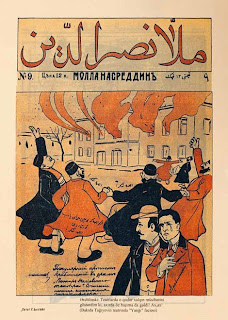As someone who has fought 20 successful elections over a 22
year-period - 8 of them public elections; and 12 internal "political
group" elections for leadership positions, I am now remarkably indifferent
to (if not cynical about) elections. Particularly American elections whose
"policy-makers" are so much in thrall to commercial interests - not
least because their (very expensive) campaigns are funded by these same
interests.
Here's a good piece on a new book on pluocracy
Radicals like myself, of course, often run the danger of
underestimating the importance of voting for "least worst" candidates
to avoid the worst excesses of the rampant neo-liberal characters who are
everywhere these days in elections. A "what if" approach to history
has become quite popular these days - what if Gore or McCain had been elected??
A good solid analysis here on the financial and tactical aspects of the current Presidential elections in the USA shows the extent to which big money thinks it can buy elections. Two and
half billion dollars spent so far by the various campaigns to put one man in
the White House. The article also suggests that the Obama campaign tactics have been well-researched and successful -
Romney's outside fundraising body or "Super Pac", called Restore Our Future, has no fewer than 25 billionaires on its list of donors. Sheldon Adelson, a Las Vegas casino magnate, has alone injected almost $40m into this election cycle in favour of Republican candidates and may approach $100m before it's done. Emboldened by the two court rulings in 2010 (Citizens United v Federal Election Commission andSpeechnow.org v Federal Election Commission) that removed any barriers from the investment of corporate, union or private money into elections, Adelson and other mega-wealthy donors will have pumped in close to $500m come November. That in turn will bring the total cost of putting one man into the White House to a dizzying total of $2.5bn.
"Wealthy donors are injecting money into the electoral process at a level we have never seen before," said Bob Biersack, who tracks the influence of cash in politics at the Centre for Responsive Politics. "The danger is that this will swing the balance of power, effectively disenfranchising the majority of Americans."
Obama has fought off the march of Big Money partly by transmitting a positive message to voters of who he is and where he stands. His convention was a master-class in political communications, replete with a lecture from the master himself, Bill Clinton. With his help, Obama made the case that the continuing hardship felt by many Americans was not a reflection of his own failed policies, as the Republicans contest, but rather a sign that he needs more time to get the job finished. "It will take more than a few years for us to solve challenges that have built up over decades," he said.
The 2012 election was always going to be about the economy, and it remains Obama's most vulnerable point. But in this crucial area the Obama re-election campaign has coolly refused to be cowed by the Republican assault and calmly turned the argument back against them: the economic meltdown happened on the Republicans' watch; Romney opposed the bailout of the car manufacturers; though the economy still falters, the stock exchange is robust; and house prices are beginning to recover. Those arguments have played well in battlegrounds like Ohio, where Obama's role in having saved the auto industry resonates among its thousands of car parts and distribution outlets. The state has a jobless rate of 7.2%, notably below the national average.
Across the country, the anxious electorate appear to have been listening. This week's Quinnipiac poll records that for the first time since it began following the Obama-Romney race, the president has come out on top on the economy. Some 51% of likely voters said that Obama would do a better job on the economy to Romney's 46%.
While Romney and his conservative rivals were slugging it out with each other for the Republican nomination, the Obama team were quietly working behind the scenes to define Romney's biography. In a series of attack ads aired remorselessly in the swing states, they painted him as a rich kid born with a silver spoon in his mouth who had no affinity with the daily trials of the middle classes, destroyed ordinary people's lives as head of Bain Capital, and was so arrogant that he wouldn't declare his taxes.
Quinnipiac's Peter Brown, who as a polling analyst sides with neither of the two main parties, says he has never witnessed such a successful character assassination in a presidential race. "They have turned Romney into a wealthy, out-of-touch elitist, who is just not someone the average voter wants to have a beer with."The cartoon is a James Gillray
Here's a good piece on a new book on pluocracy







